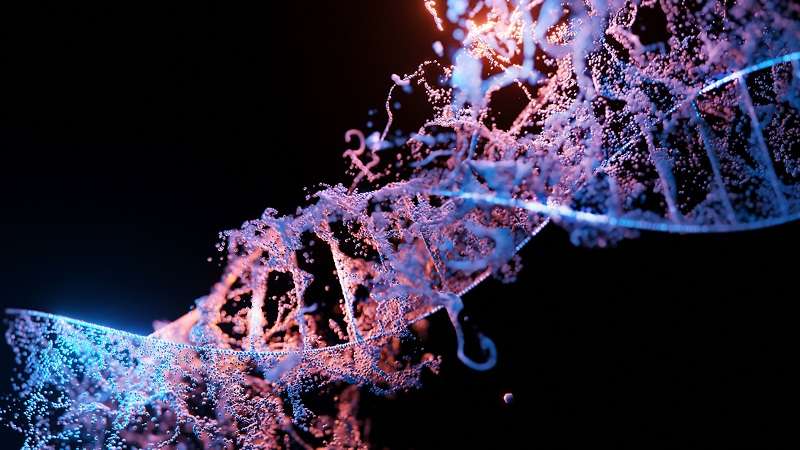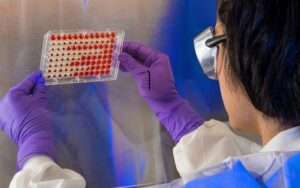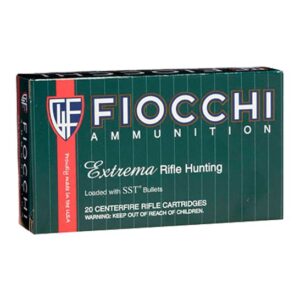Researchers at Baylor College of Medicine and its collaborating institutions have engineered immune cells to control two major life-threatening complications, graft-versus-host disease (GvHD) and cancer relapse, which usually appear after allogeneic hematopoietic stem cell transplantation for leukemia (allo-HSCT). The results of animal model studies published in the journal Blood support further studies to determine the feasibility of using this approach to reduce mortality and improve patient outcomes.
Dr. Maksim Mamonkin, assistant professor of pathology and immunology at Baylor University Center for Cell and Gene Therapy and corresponding author, said: “In general, allogeneic hematopoietic stem cell transplantation is used to treat patients with invasive diseases who do not respond well to traditional treatments, and it may cure several types of blood cancers.”
Patients receive intensive chemotherapy first, which eliminates most cancers, but also severely damages the immune system and hematopoietic cells. To salvage these vital functions, patients need to receive an infusion of stem cells from a healthy donor to allow the patient to regrow and resume normal hematopoietic processes.
Transplanted stem cells usually contain a small number of donor immune cells called T cells that recognize normal organs and tissues as foreign and initiate an immune rejection-like process called graft-versus-host disease (GvHD). “This is a very serious situation that requires aggressive immunosuppression to stop the activity of these T cells to prevent them from leading to organ failure and death,” Mamonkin said.
However, immunosuppressive drugs also impede patients’ ability to fight infections and cancer and sometimes do not prevent GvHD. “As a result, cancer relapse and GvHD account for the majority of patient deaths after HSCT,” Mamonkin said.
“This has prompted interest in finding alternative treatments for GVHD and tumor recurrence,” Mamonkin said. The team hopes to protect patients from GVHD and cancer relapse without eliminating their normal immune function, which not only helps fight leukemia, but also prevents serious pathogenic viruses, such as cytomegalovirus, Epstein-Barr virus, and adenovirus, which often appear after transplantation in these fragile patients.
The team has accumulated extensive experience in developing engineered T-cell therapies against malignant T cells, such as T-cell leukemia and lymphoma, and testing these approaches in the clinic. Using similar strategies to counter T cells driving GvHD seems to be a logical extension of their previous work.
Mamonkin explained: “Our goal is to selectively remove only T cells that cause GvHD while maintaining the body’s ability to fight other diseases. To this end, we need to find a way to identify these cells — a signature that is predominantly expressed on cells mediating GvHD, rather than in other cells. After extensive searching, we found that OX40 protein is a promising candidate protein.”
To test this goal, the team contacted their collaborators at Boston Children’s Hospital to study GvHD in a non-human primate model. They demonstrated that OX40 is abundantly present on the surface of T cells permeating target organs during acute graft-versus-host disease.
The researchers then designed a receptor called the allogeneic immune defense receptor (ADR), a molecule they expressed on therapeutic T cells that allowed them to recognize and kill cells expressing the OX40 protein. Dr Feiyan Mo is a graduate student at the Translational Biology and Molecular Medicine Program at Baylor University and he led these studies at the Mamonkin laboratory.
Tests on cells in laboratory and animal models showed that ADR armed T cells very efficiently suppressed T cells mediating GvHD and protected animals from lethal conditions. At the same time, ADR T cells do not produce much damage to “good” T cells that control viral infections, “which leads us to believe that this therapy generally does not inhibit immunity,” Mamonkin said.
Inspired by these findings, the team combined ADR and leukemia-specific chimeric antigen receptor (CAR) in T cells to test whether these two-armed cells could simultaneously counteract cancer relapse after GvHD and HSCT. Indeed, T cells equipped with ADR and CAR protect animals from GvHD and leukemia relapse, thus paving the way for testing this approach in high-risk patients with both diseases.
Mamonkin said: “We have successfully engineered immune cells from healthy donors to prevent two major causes of death after bone marrow transplantation. We are pleased to continue this approach to further evaluate its value in the treatment of malignant blood cancers and ultimately improve the prognosis of patients after stem cell transplantation.”





















